Journey to the Roof of Australia

VulcanSpirit
Richard & Alison Brunstrom
Fri 28 Nov 2014 02:17
|
Your intrepid correspondents, together with Australian family have been off
down south, to Konquer Kozzie (my best attempt at Oz-speak) - more formally
Mount Kosciuszko, Australia’s highest mountain at 2228m (c 7000ft). The
mountain is best reached by chairlift to the plateau, then a very easy almost
flat 6km hike along a metal track.
Here is some of the team exiting the chairlift. This is quite exciting the
first time as the safety bar won’t lift up leaving you trapped in the chair and
about to go straight back down whence you came. You then discover that you have
your feet on the footrests connected to the safety bar so it can’t raise. By the
time you have worked all this out (2 secs) you have to move very smartly to get
clear. Here are some Australians caught in the act:
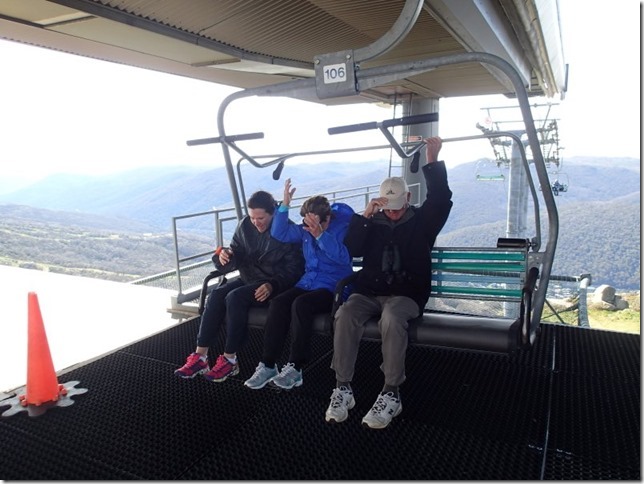 From left to right sister-in-law Donna Brunstrom, her mother Helen and
father Gary. And here is the group enjoying a well-earned cuppa in the chairlift
cafe, frozen half to death, with the alpine village of Thredbo seen through the
window:
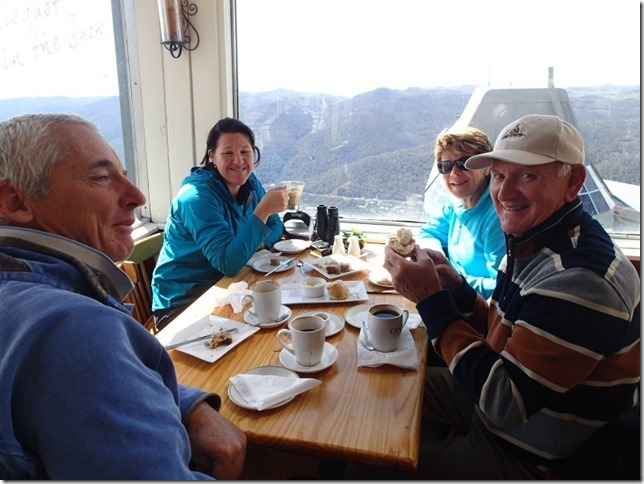 L to R: Me, Donna, Helen, Gary.
The track to the summit is mostly a metal grill to protect the very fragile
montane vegetation:
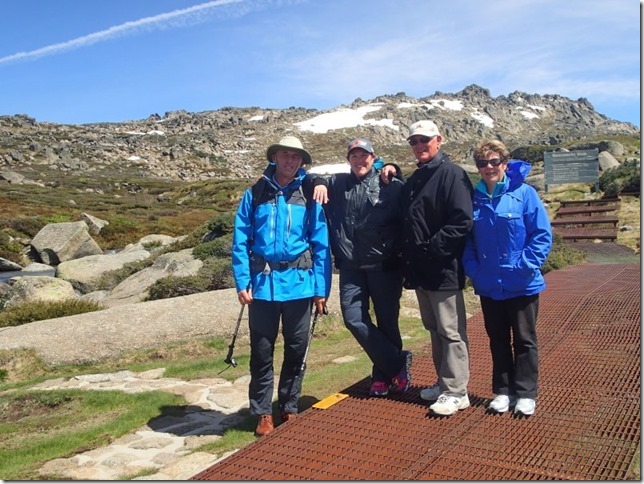 The previous day had seen 75mm of rain after weeks of beautiful weather;
our day started sunny but freezing cold so both sun protection and lots of warm
clothing was the dress of the day. We met a surprising number of Swiss visitors
complaining about the cold. Close observation of the picture will reveal my
walking trousers, derided by the female half of the VS crew as being humorously
short, and my sensible new brown walking shoes derided by my sister-in-law as
“something that (my brother) Alan would wear”. It’s just water on a duck’s
back.
Mount K lookout: me, Ali, Donna, Gary, with Kosciuszko over my head:
 A typical plateau view, of Lake Cootapatamba, one of only five glacial
lakes in Australia.
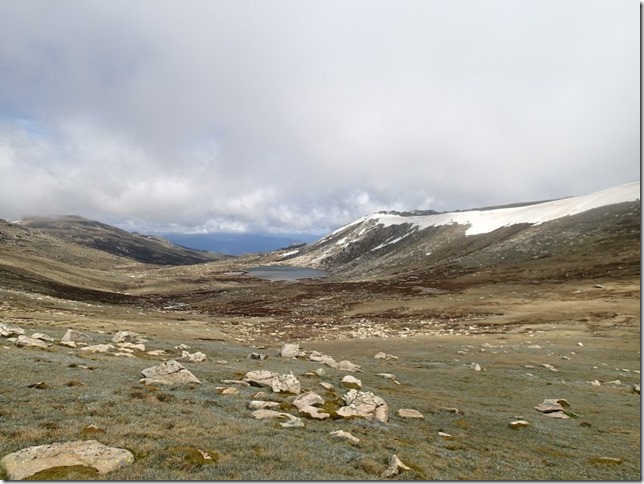 And here is Ali on the summit, with the weather closing in:
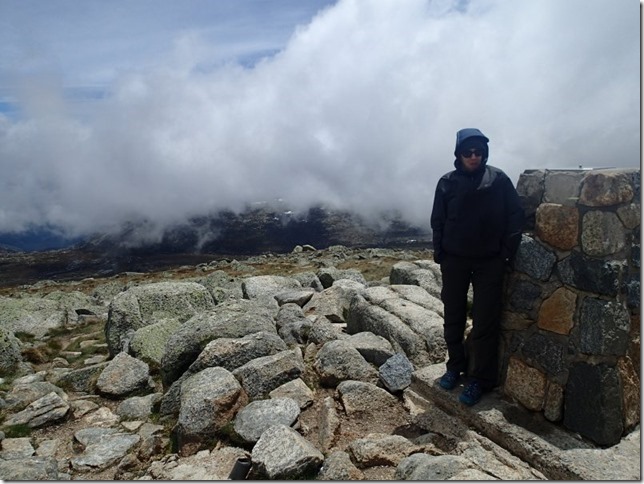 Why is it called Kosciuszko, you might well be asking. I think the answer
is really fascinating. The mountain was named on 12 March 1840 by a Polish
explorer geologist and surveyor (he carried his survey instruments right up onto
the plateau to be sure of finding the highest peak), PawelStrzelecki. He may
literally have been the first human on the top as white settlers had only
recently arrived in the valleys below and the Aborigines had regarded the tops
as sacred places for spirits only. He named is Kosciusko because he thought it
resembled the tomb in Krakow of one of his heroes, General Tadeusz Kosciuszko.
Kosciuszko was a remarkable man who never set foot in Australia but was
well known internationally for fighting for the values of freedom, liberty, and
equality of all races. This led him, via Polish Military College and Paris where
he specialised in military engineering under Vauban, to fight for the Americans
during their War of Independence. He rose to Brigadier General and played an
absolutely crucial role in the Battle of Saratoga, regarded as the turning point
in the war. He designed and built the fortress of West Point, which was regarded
by the British as impregnable (so it was never attacked). This secured the
Hudson pathway and forced the British to turn away and move south to their
eventual capitulation at Yorktown. Kosciuszko returned to Poland, fought
unsuccessfully for Polish freedom from the Russians and died in 1817. Having
failed to persuade the American Founding Fathers to end slavery he left much of
his American estate to Thomas Jefferson for the purpose of purchasing the
freedom of slaves and their subsequent education. Seven years after his death a
school for former slaves was established under his name in Newark NJ.
Strzelecki travelled widely in Australia from 1839 to 1843, covering
12000km on foot without any violent encounters with Aborigines because of his
insistence in treating them properly on their own terms. He discovered many
valuable mineral deposits including coal and gold and made very useful maps. He
then settled in England. His seminal “Physical Description of New South Wales
and Van Diemen’s Land”, published in 1845 was described as an asset in
scientific literature for over a century thereafter. He then got involved in
humanitarian work in Ireland during the potato famine, ending up being put in
charge of the relief effort for the whole of Ireland. He is credited with saving
the lives of up to 200 000 children. Queen Victoria knighted him Sir Paul
Strzelecki in consequence.
|